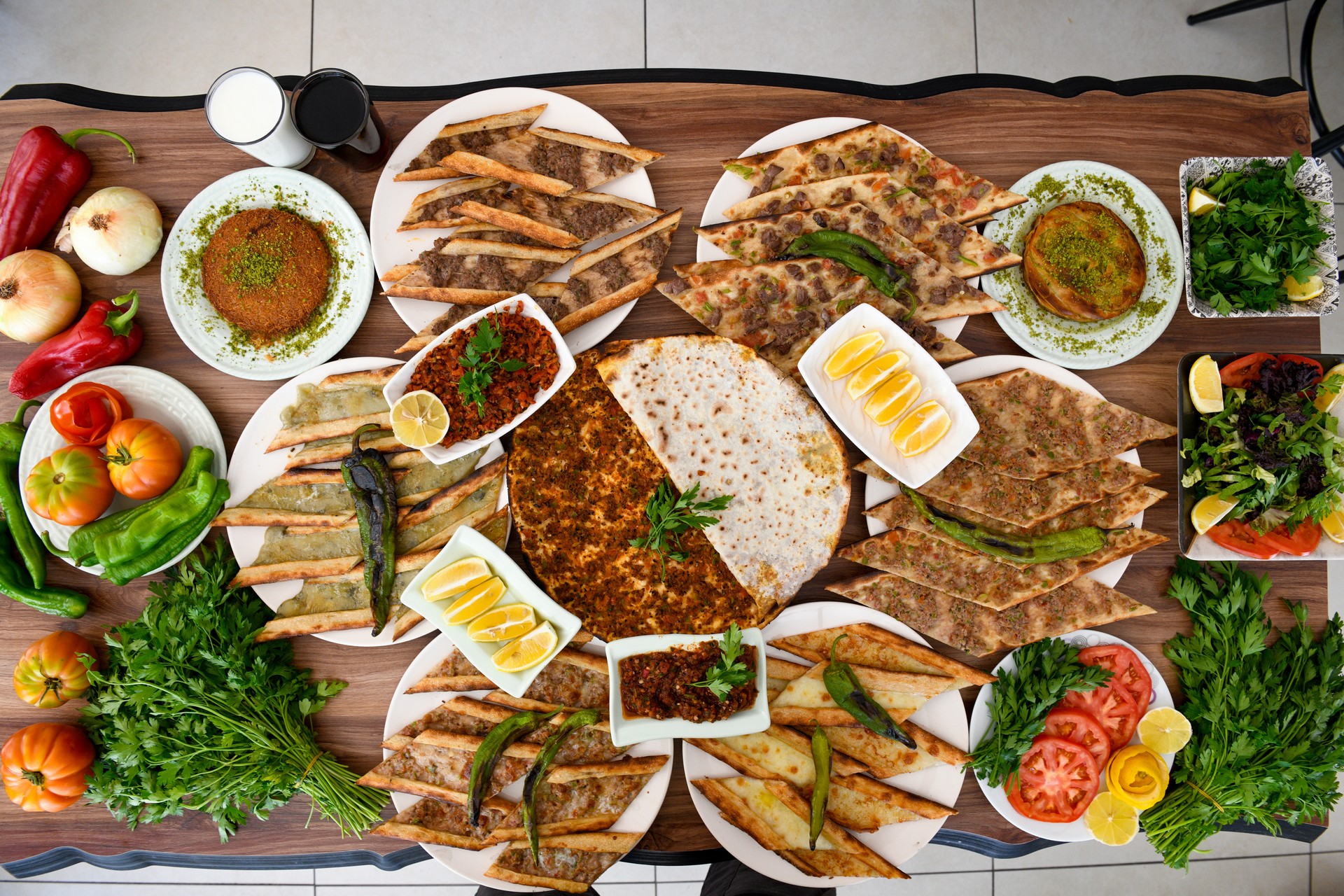
Türkiye’s eating habits reflect its shifting culture. These days, the nation divides into those who have tried Dubai chocolate and those who haven’t. While the traditional guest room quietly disappears, 89% of the nation is still an “I eat everything” person. While screen use during mealtime becomes the norm, there’s still so much the cuisine’s transformation tells.
A new research suggests that one defining element stands above the rest: spicy. According to a recent comprehensive study conducted by FutureBright Group in partnership with T24, 36% of Turkish respondents describe their national flavor profile as “spicy.”
Nearly a third go further, characterizing Türkiye as a “pul biber country”, a reference to the ubiquitous crushed red pepper that adds fire to many traditional dishes. This emphasis on spice is not only about individual taste preferences, but also a broader cultural association of intensity and warmth with Turkish identity.
The same research reveals that red is the dominant color of the Turkish tables. That perception aligns with the centrality of red-colored ingredients in Turkish cooking, such as tomato paste as well as meat and spices. Surprisingly, olive oil, often seen as a hallmark of Mediterranean diets, finds limited use, appearing in only 10% of responses. Fish consumption barely registers, pointing to a landlocked dietary mentality in much of the country, despite its extensive coastline.

When asked what dish first comes to mind upon hearing the phrase “mom’s cooking,” a significant share of respondents mention sarma—stuffed grape leaves filled with rice and spices. This dish, time-consuming and labor-intensive, is seen not only as nostalgic comfort food, but also as a symbol of maternal care and the home-cooked meal. The fact that sarma remains a culinary icon suggests the strength of traditional food as a marker of family and emotional continuity, even as eating habits change across generations.
Hospitality in Türkiye, another deeply ingrained cultural value, also finds expression through food. When it comes to hosting guests, lentil soup, shepherd’s salad (çoban salata), and stewed or sautéed meat (et kavurma) dominate the menu. These dishes blend simplicity with richness, and reflect a continued emphasis on generosity and warmth in social settings. While the formal etiquette of Turkish hosting may be softening over time, the emotional language of food still communicates care, respect, and belonging.
Despite growing urbanization and lifestyle changes, cooking at home remains a firm norm for most Turks. A striking 72% of respondents report preparing meals at home every day, a figure that suggests resilience in domestic culinary traditions. Only 2% of participants say they order food from outside daily, pointing to an enduring preference, or perhaps economic necessity, for home-cooked meals. This pattern illustrates the balance many households strike between tradition and modern pressures.
Still, this commitment to home cooking is not without its adaptations. Half of the respondents say they often prepare fast-food-style meals at home, suggesting that convenience is quietly reshaping culinary routines. Among younger consumers, particularly those aged 18 to 24, the consumption of frozen versions of traditional dishes is on the rise. These choices reflect a generation navigating between inherited food customs and the time constraints of modern life, indicating that while cooking remains widespread, what counts as a “home-cooked” meal is being redefined.

Even as home cooking persists, takeout and delivery trends are offering new insights into Türkiye’s evolving relationship with food. Lahmacun, döner, and pizza top the list of most frequently ordered foods, suggesting a preference for quick, affordable, and familiar dishes. Lahmacun and döner in particular maintain strong ties to Turkish culinary identity, blending meat, spice, and portability in a format that appeals across age groups and regions.
According to the study, 73% of respondents who eat outside or order in say they consume döner, with an identical percentage reporting the same for lahmacun. These high rates of consumption highlight how certain foods have become default options for dining out, functioning as both everyday staples and cultural symbols. Meanwhile, pizza’s place on the list points to increasing openness to globalized eating habits, though it’s telling that local favorites still dominate overall.
One of the most striking findings from the study is the role of technology in shaping how meals are consumed. An overwhelming 80% of participants say they use a screen—whether television, smartphone, or tablet—while eating. This trend spans across generations and socio-economic groups, marking a significant cultural shift in the ritual of shared meals. Eating, once an anchor for interpersonal connection and conversation, is increasingly a solitary or screen-mediated activity.
The impact is most visible among children: two out of every ten are regularly watching a screen during meals, often at the family table. At the same time, the tradition of deep conversation during meals, once a hallmark of Turkish hospitality and family cohesion, appears to be fading. Only 30% of households share the responsibility of setting and clearing the table, and communal dining is weakening as an everyday practice. These patterns suggest a broader fragmentation of family routines, reshaped by digital habits and changing lifestyles.

Despite the strong presence of traditional foods in everyday life, Turks are increasingly influenced by global trends, especially those that go viral on social media. A significant 57% of respondents say they’ve tried Dubai-style viral chocolates, a recent food fad that gained traction through platforms like TikTok and Instagram. Nearly half (45%) of participants acknowledge that their food choices are shaped by what they see online, showing the power of digital culture in altering consumption behavior.
These shifts coexist with a broader openness to diverse foods. An overwhelming 89% of respondents identify as omnivorous, saying they “eat everything.” Only 2% of participants identify as vegan or vegetarian, a figure that remains low compared to many Western societies. Yet even as domestic diets evolve, Turkish expatriates remain deeply connected to their culinary roots—68% report that when abroad, they actively seek out foods from Türkiye. Food, in this context, becomes not just sustenance, but a portable form of identity.
Changing food practices are also visible in the design of Turkish homes. Dedicated dining rooms, once standard in middle-class households, are disappearing from newer residences. This architectural change reflects evolving family dynamics and a loosening of the formal structures around mealtime. With meals increasingly consumed on couches or in front of screens, the spatial boundaries between eating, relaxing, and working are blurring.
Another area where change is uneven is fish consumption. Outside the Black Sea region, where anchovies (hamsi) remain a staple, fish plays a minimal role in Turkish diets. Even within the Black Sea, the culture remains largely monolithic, centered on a single species rather than a broader seafood tradition. This regional gap reveals how culinary variety is still influenced by geography and longstanding cultural habits, even as globalization and modernization shape other aspects of the national diet.